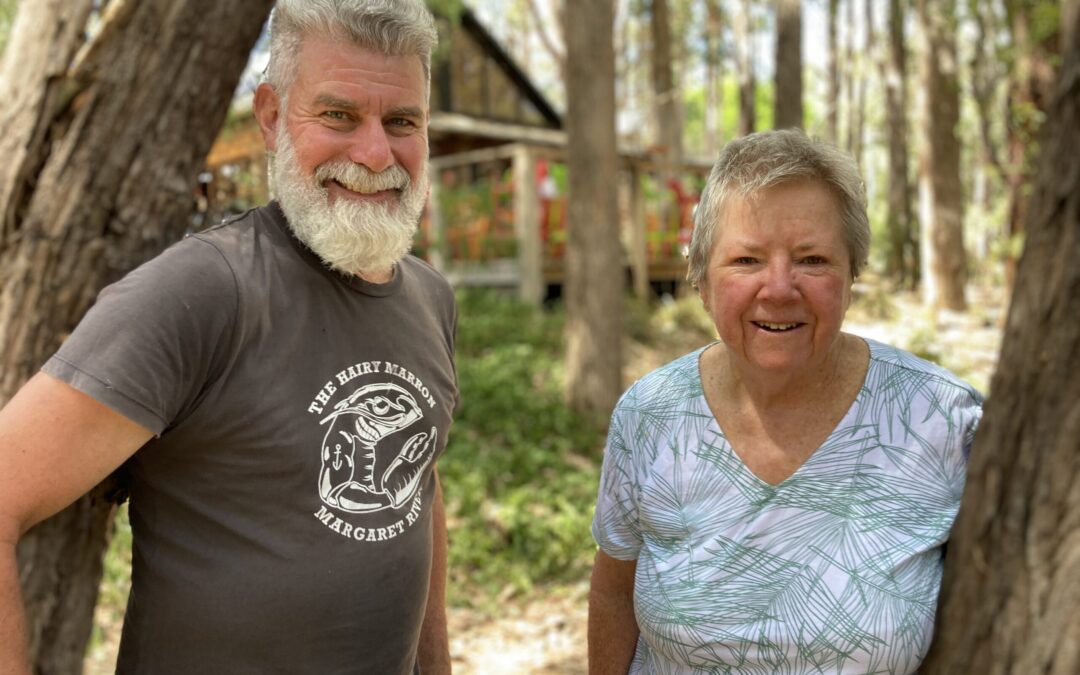Blue Periwinkle, Dolichos Pea and Pandora Vine – they’re the unholy trinity of creeping weedy vines that threaten our bushland, and Nature Conservation Margaret River Region says now is the time to control them.
The conservation group says all three weeds can smother and choke out whole swathes of bushland very quickly, and once established they are incredibly difficult and labour intensive to remove.
“That’s why we’d love everyone to be able to identify these weeds. And if you have them on your property, it’s critical to get onto them early. That way you can remove them before they become rampant, when it’s a mammoth task to get rid of them,” says Declan McGill, who coordinates Nature Conservation’s Bush Regeneration Team.
“This time of year, when the vines have endured a dry summer and before the autumn/winter rains, is a good time of year for control. If you can’t carry out the work yourself, our bush regenerators specialise in environmentally sensitive weed control, and we’ve got a wealth of experience dealing with sensitive ecological communities. The ethics of land care are at the core of what we do, with the goal of more ecological diversity and bringing back natives.”
Blue Periwinkle (Vinca major) is native to the Mediterranean and a common garden plant that has invaded shady creek lines and disturbed bushland. It’s a perennial creeper that can form dense mats because any stems that touch the ground can root. It has large blue solitary flowers that appear in winter and spring.
Meanwhile, Dolichos Pea is a rampant, twining vine from South Africa with masses of white, pink or purple pea-shaped flowers from spring into summer. It can smother all other native ground covers and shrubs, and is easily spread by seed, birds, water, soil and garden refuse.
Finally, there are several species of weedy Pandora Vine, which are evergreen, vigorous climbers with bright green foliage, capable of smothering native bush and climbing to the tops of karri trees. Seed is spread by wind or water and seedlings come up as thickly as grass over a large area, choking out natives.
One of the areas where these weeds are present is around the Old Settlement, Hairy Marron Bike Café and Barrett St Reserve near the Margaret River. Friends of Barrett St Reserve’s Maureen Munro and Hairy Marron owner Paul Iles said they were keen to work with the Shire of Augusta Margaret River to remove the weeds and replant natives. “My team are really grateful for the opportunity to work right on the edge of the forest and people comment all the time about what a beautiful setting it is, so we realise our role in helping to manage it,” Paul said. “We’re really committed to replanting and trying to keep the weeds down, as well as rebuilding fauna habitat. It is coming back and you can see how nature is responding.”
Maureen said: “We thought some of these weeds were impossible to eradicate, but we’re seeing great results and we’re going to keep going. It exciting! These weeds are garden escapees and we have to stop them.”
For landholders who need assistance on their property, Nature Conservation’s bush regenerators are available for fee-for-service contract work such as weed management and control, planting natives and watering.
Nature Conservation general manager Drew McKenzie said the conservation group also employs a biodiversity officer who can visit your property to carry out a biodiversity assessment, survey flora and fauna, assess any threats, and create a multi-year plan to improve the biodiversity of the property.
All funds from hiring the Bush Regeneration Team go directly back into funding Nature Conservation’s work to protect our environment across the Margaret River Region. To find out more or hire Nature Conservation’s Bush Regeneration Team, email declan.mcgill@natureconservation.org.au.

